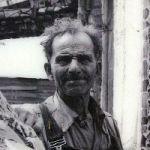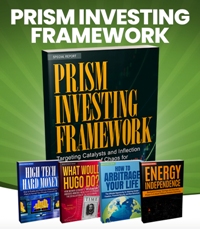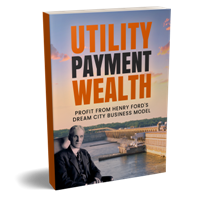 Bear markets are for the patient few. Those who can resist the countless occasions to lose money. With each bounce comes an opportunity for investors to buy higher so they can later sell lower.
Bear markets are for the patient few. Those who can resist the countless occasions to lose money. With each bounce comes an opportunity for investors to buy higher so they can later sell lower.
Major U.S. stock market indexes continue to deliver whipsaw results. The selloffs are abrupt. While the bounces come with incredible vitality. The timing can be tricky.
Dip buyers pile into the rallies and attempt to trade the swings. Others see what look to be discounted share prices. The apparent deals are too good to resist.
Some investors, having succumbed to emotions of greed and fear, have repeatedly destroyed their capital over the past week buying before the selloffs and then selling before the rallies. What to make of it?
Maybe the stock market’s freefall on the heels of President Trump’s Liberation Day tariffs was merely a burp. Maybe Trump’s subsequent 90-day pause of reciprocal tariffs on every country except China will boost the major stock market indexes past their all-time highs from January.
On Wednesday, Wall Street celebrated the tariff pause announcement with massive buy orders. The S&P 500 closed out the day with a 9.52 percent increase. The NASDAQ spiked up 12.16 percent. But the good times were short lived. On Thursday, these indexes gave back a respective 3.46 percent and 4.31 percent.
There’s plenty of risk inherent to this market. Namely, stock market valuations cannot remain at a permanent state of extreme highs. Mean reversion is requisite.
Moreover, even with its year-to-date decline of 10.23 percent, the S&P 500 still retains a cyclically adjusted price-to-earnings ratio of 32.55. The long-term mean dating back to 1871 is 17.23. In other words, there’s still much, much further to fall.
Also remember that the stock market is one thing. The economy is something entirely different. The intent of Trump’s tariffs is to bring manufacturing jobs back to American shores.
This objective cannot be achieved with the push of a button. That is to say it cannot be fulfilled in a quarter or two. Nor can it be fulfilled in a year or two. If Trump’s plan works at all, it will take a decade or more. And at what cost?
Right now, Trump’s playing with fire with his ‘on again off again’ reciprocal tariff policies. The chaos and uncertainty are harmful to long established trade relationships and supply chains. The more he plays around the greater the risk he starts a fire that cannot be contained. The result would be a mega trade war, massive unemployment, and global recession.
Perhaps this is Trump’s ultimate goal. To first burn down the world economic order that has existed since the early 1970s, so he can rebuild it to his liking. From Trump’s perspective, if he must set it on fire and ‘let it burn’ to achieve his ends, then so be it.
This approach, however, is not entirely novel. The strategy of ‘let it burn’ has been employed on occasion with varying results. Let’s explore…
Work of a Madman
Italian immigrant Simon Rodia was a man of resolve. He labored nearly every day from 1921 to 1955, chicken wiring steel pipes and rods together, pausing only to take swigs of malt liquor.
With singleness of purpose, he focused his energy into erecting numerous towering eyesores in his backyard in the Watts district of Los Angeles. No one really knows why. Maybe he found it satisfying.
One day, after 34 years of this madness, Rodia abruptly stopped. On a whim, he deeded the property to his neighbor and hopped a bus to the East Bay. No one in Watts ever heard from him again. But his monstrosities, known as the Watts Towers, are now a National Historic Landmark.
Strange, peculiar things happen in Watts from time to time. Over nearly two decades, we regularly rode the LA Metro Blue Line (now the A Line) from Long Beach to Los Angeles, traversing through Watts.
One late-December evening in 2005, we happened to be aboard the southbound train at the precise moment the funeral service for Crips CEO, community role model, and children’s author, Tookie Williams, concluded. This was one week after Tookie was executed by lethal injection at San Quentin Prison. Governor Schwarzenegger rejected final pleas for clemency.
At the close of the four-hour service, with remarks by Reverend Jesse Jackson, Tony Robbins, Snoop Dogg, and a eulogy delivered by Minister Louis Farrakhan, to over 2,000 grieving attendees in and outside of Bethel AME Church, countless mourners packed onto our train.
The somber atmosphere in the shadow of the Watts Towers – and the smell of booze – was so thick you could cut it with a knife.
Rodia, for his efforts, is immortal. He’s one of the many faces on the cover of The Beatles’ Sgt. Pepper’s Lonely Hearts Club Band. Look for the grimacing madman immediately left of Bob Dylan.
Simmering Hot
The Watts Towers are a story of dedication and improbable preservation in an area of blighted destruction. There’s a nugget of value in these edifices, and the adjacent “Ship of Marco Polo” embedded with shells and bottle shards, which can only be appreciated within the context of their surrounding landscape.
In 1965, a decade after Rodia skipped town, and one month after his death, Watts went up in flames. On August 11, 1965, the opening salvos of the Watts riots were fired. South Central Los Angeles burned to the ground over the following five days. More than 30 people died.
Maybe with a little diplomacy the whole fiasco could have been avoided. Or maybe not. Some events – like a stock market panic – are not so much a question of if, but when.
In the hot summer of 1965, race tensions simmered across the southland. The Watts riots could have been provoked by anything. What’s more, there was an irresistible craving to sack small businesses for fun and for profit.
Ultimately, the riot was triggered when a policeman arrested a drunk driver. The policeman was white. The drunk driver was black.
The arrested man’s stepbrother wanted to drive the car home. A reasonable request. The policeman told him to pound sand. The car was impounded.
Tempers flared. The arrested man’s mother, who lived down the street, caught word of what was going on. She took a break from cooking a rabbit to go claim her car and help her son resist arrest.
By then a hostile crowd had formed. The resisting son was hit in the face with a baton. One thing led to another, and the mother and stepbrother were handcuffed and placed in the back of a patrol car too. Then someone claimed the police had kicked a pregnant woman. Things escalated from there.
Trump Plays with Fire
The riot began the following night. The arrested man’s mother called for peace. Her pleas were met with violence. Bricks were thrown. Windows were smashed. Stores were looted. Fires were set. Over 1,000 buildings were burned. Many to the ground.
There was also screaming and wailing. Lots of it.
In response, the Los Angeles Police Department, Los Angeles County Sheriff’s Department, and California Army National Guard, secured the perimeter and blockaded the riot zone.
No one got in. No one got out.
The policing strategy was real simple: let it burn.
Inside the “looter’s playground” rioters set the city on fire while screaming and chanting, “Burn, Baby, Burn!”
What’s the point?
Letting a city burn is a last resort. It’s a strategy that’s employed when all other means and methods to restore order are lost. Burning down the global economy should also be a last resort.
Trump, however, plays with fire. Rather than balancing the budget, which would go a long way towards reducing the trade deficit, he strikes the match, lets things burn a bit, then snuffs it out. After that, he lights another match and burns things a bit more. At some point, the fire will spread beyond what he can put out with a haphazard announcement on Truth Social.
While much of the “looter’s playground” was destroyed during the Watts riots in 1965, Rodia’s towers were left unharmed. Even the most disenfranchised brick throwing pyromaniac knew there was something of value there. Something that should be preserved for the long haul.
After Trump’s tariff fires what of the economy and financial markets will remain?
Gold, silver, long-term food storage, and other tangible means for wealth preservation will persist for the long haul. Stocks, bonds, and other debt-based financial assets will be left in smoldering ruins.
[Editor’s note: Have you ever heard of Henry Ford’s dream city of the South? Chances are you haven’t. That’s why I’ve recently published an important special report called, “Utility Payment Wealth – Profit from Henry Ford’s Dream City Business Model.” If discovering how this little-known aspect of American history can make you rich is of interest to you, then I encourage you to pick up a copy. It will cost you less than a penny.]
Sincerely,
MN Gordon
for Economic Prism





its amazing how trump’s lies that china “takes advantage of the u.s” are so easily debunked by a bit of research. china gives the u.s. preferential treatment and lower or zero tariffs on a lot of imports. but to a delusional con man thats taking advantage. its obvious this failed alleged business person was selected to crash the world economy . for WEF?
The world will manage on, idiots or no.
Don’t worry too much.